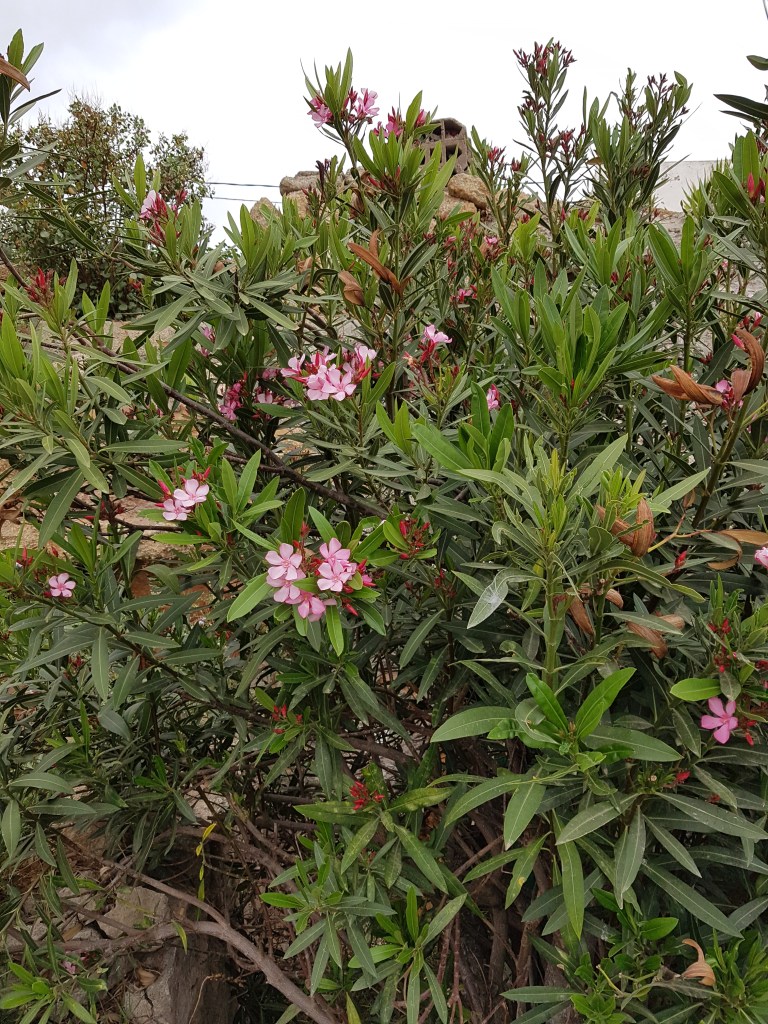
No, it’s not safe. It’s a really, really dumb idea. Oleander is VERY poisonous and you could die. Do not do it.
OK, that was the short version; here’s the longer version. Oleander (Nerium oleander) is a plant belonging to the plant family that’s been the focus of much of my research for the past 30 years: Apocynaceae. The plant is widely grown in warm temperate and subtropical areas as an ornamental shrub or small tree and there are cultivars with flowers in a diverse palette of colours. In the Mediterranean, where it’s native, it’s a pollination generalist and pollinated by large bees, hawkmoths, and small flies. However, visitation to flowers is infrequent because, as Javier Herrera showed in this study, the flowers produce no nectar. It’s a rare example of a species of Apocynaceae with rewardless flowers in a family with very diverse pollination systems, as we showed in our study last year.
Although it’s very beautiful, oleander is also extremely poisonous. Many members of the family Apocynaceae are toxic: they are crammed full of alkaloids, cardiac glycosides, and other nasty chemicals that defend the plant against all but the most specialised of herbivorous insects, such as monarch butterflies (Danaus plexippus). But even in a family renowned for its toxicity, oleander stands out as being especially lethal.
Recently, a chemical derived from oleander called oleandrin has been touted as a health supplement to treat patients with the COVID-19 coronavirus. However there is no evidence that it is effective as a treatment but a LOT of evidence that it is highly toxic to both animals and humans. The fact that’s being touted as a COVID–19 treatment by President Trump and some of his pharmaceutical industry donors should ring alarm bells for anyone with any common sense. And just because it’s a “natural” product does not in any way make it safe. DO NOT EAT OLEANDER!

Thank you for your clear message.
I am embarrassed for myself and my fellow citizens. :-[
I’m just hoping no one tries to self-administer the plant!